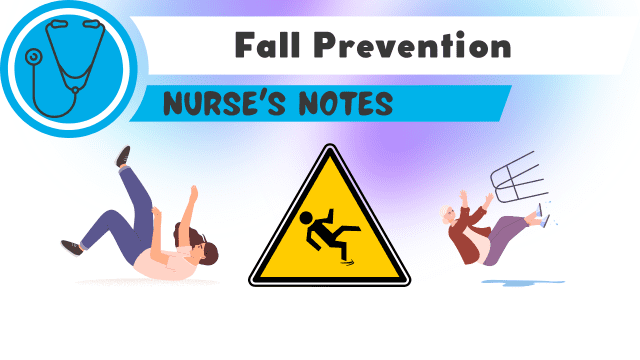Everything about Dementia Fall Risk
Table of ContentsNot known Incorrect Statements About Dementia Fall Risk More About Dementia Fall Risk4 Easy Facts About Dementia Fall Risk ExplainedThe 20-Second Trick For Dementia Fall Risk
A fall danger assessment checks to see how likely it is that you will drop. It is primarily done for older grownups. The analysis typically includes: This consists of a series of concerns about your general wellness and if you've had previous drops or troubles with balance, standing, and/or walking. These devices check your strength, balance, and stride (the way you walk).Interventions are suggestions that might lower your danger of dropping. STEADI includes three actions: you for your threat of falling for your threat variables that can be enhanced to attempt to protect against falls (for example, balance issues, impaired vision) to decrease your risk of dropping by utilizing effective strategies (for instance, providing education and learning and resources), you may be asked numerous questions consisting of: Have you dropped in the previous year? Are you fretted concerning dropping?
If it takes you 12 secs or even more, it might suggest you are at higher risk for a fall. This examination checks stamina and equilibrium.
The placements will certainly get more challenging as you go. Stand with your feet side-by-side. Move one foot halfway ahead, so the instep is touching the large toe of your various other foot. Relocate one foot fully before the other, so the toes are touching the heel of your various other foot.
Getting My Dementia Fall Risk To Work
A lot of falls happen as an outcome of numerous contributing factors; consequently, handling the danger of dropping begins with determining the elements that contribute to fall danger - Dementia Fall Risk. A few of one of the most relevant risk variables consist of: History of prior fallsChronic medical conditionsAcute illnessImpaired gait and equilibrium, reduced extremity weaknessCognitive impairmentChanges in visionCertain risky drugs and polypharmacyEnvironmental factors can likewise enhance the danger for drops, consisting of: Insufficient lightingUneven or damaged flooringWet or unsafe floorsMissing or harmed handrails and get barsDamaged or improperly equipped tools, such as beds, mobility devices, or walkersImproper usage of assistive devicesInadequate guidance of the people living in the NF, including those who display aggressive behaviorsA successful fall threat administration program calls for a thorough professional evaluation, with input from all participants of the interdisciplinary team

The care strategy should additionally consist of interventions that are system-based, such as those that promote a safe setting (suitable lighting, handrails, get hold of bars, and so on). The efficiency of the treatments need to be reviewed periodically, and the treatment plan changed as necessary to mirror adjustments in the fall danger assessment. Implementing a loss danger monitoring system utilizing evidence-based finest practice can decrease the frequency of falls in the NF, while limiting the potential for fall-related look at this web-site injuries.
An Unbiased View of Dementia Fall Risk
The AGS/BGS guideline recommends evaluating all adults aged 65 years and older for fall danger each year. This testing contains asking people whether they have fallen 2 or more times in the previous year or looked for medical interest for an autumn, or, if they have not fallen, whether they really feel unstable when strolling.
People who have dropped as soon as without injury should have their equilibrium and gait examined; those with gait or equilibrium abnormalities must get additional analysis. A history of 1 loss without injury and without stride or balance troubles does not warrant more assessment beyond ongoing yearly autumn threat testing. Dementia Fall Risk. A fall threat evaluation is needed as component of the Welcome to Medicare assessment

Dementia Fall Risk Can Be Fun For Everyone
Documenting a falls background is just one of the top quality signs for loss avoidance and monitoring. A vital component of danger analysis is a medication evaluation. A number of classes of medicines boost fall threat (Table 2). Psychoactive medicines particularly are independent forecasters of drops. These medicines often tend to be sedating, alter the sensorium, and hinder balance and stride.
Postural hypotension can usually be minimized by decreasing the dosage of blood pressurelowering medicines and/or stopping medications that have orthostatic hypotension as a negative effects. Use above-the-knee support tube and resting with the head of the bed elevated might also decrease postural reductions in high blood pressure. The preferred elements of a fall-focused physical exam are revealed in Box 1.
-copy-5.jpg)
A TUG time more than or equal to 12 secs recommends high loss danger. The 30-Second Chair Stand test her latest blog assesses reduced extremity stamina and balance. Being incapable to stand up from a chair of knee elevation without utilizing one's arms indicates raised fall risk. The 4-Stage Balance examination evaluates fixed equilibrium by you can try this out having the individual stand in 4 settings, each gradually a lot more tough.
Comments on “Indicators on Dementia Fall Risk You Should Know”